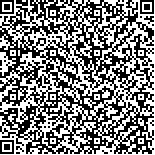Archive > Volume 44 Issue 6 > 2018,44(6):844-849. DOI:10.7519/j.issn.1000-0526.2018.06.012 Prev Next
Improved FY-3B OLR Retrieval Model and Its Application Effect
- Article
- Figures
- Metrics
- Preview PDF
- Reference
- Related
- Cited by
- Materials
Abstract:
The outgoing longwave radiation (OLR) product processing of FY3B/VIRR adopts the same method as that used in NOAA/AVHRR, that is, the regression equation relating flux equivalent brightness temperature with window channel brightness temperature is used to calculate OLR. But the OLR products of the two satellites have a negative bias of 10 W·m-2 when compared with the clouds and earth’s radiant energy system (CERES) observed OLR product, which is considered the best OLR product in quality in the world. The cause for the FY3B OLR bias is the lower accuracy of the software used in infrared radiative transfer model during the process of developing OLR retrieval model. Herein, with American line-by-line radiative transfer model software (LBLRTM) developed in 21st century, the spectral radiances at the top of atmosphere (TOA) for 2521 global atmospheric profiles are simulated, and then the OLR and window channel radiance of FY-3B/VIRR are calculated. By applying the least square method to sum up and regress the simulated data, this paper rebuilds the regression equation and coefficient of OLR, which are calculated by the FY3B/VIRR window channel5 brightness temperature. The FY-3B L1 data are applied to the model and the daily global OLR data in January, March, July, October of 2016 are processed out. Comparing the processed data with the CERES OLR products, the following results are obtained: daily averaged OLR: RMSE=9-15 W·m-2, R=0.9834, Bias=-0.3 W·m-2, monthly averaged OLR: RMSE=4-7 W·m-2, R=0.9915, Bias=-0.3 W·m-2. The validation results indicate that the improved model can work out the OLR data without systematic bias and the accuracy is basically similar with the CERES〖JP〗 observation although the inherent model regression error might exist in the single channel retrieval method.
Keywords:
Project Supported:
Clc Number:


Mobile website









